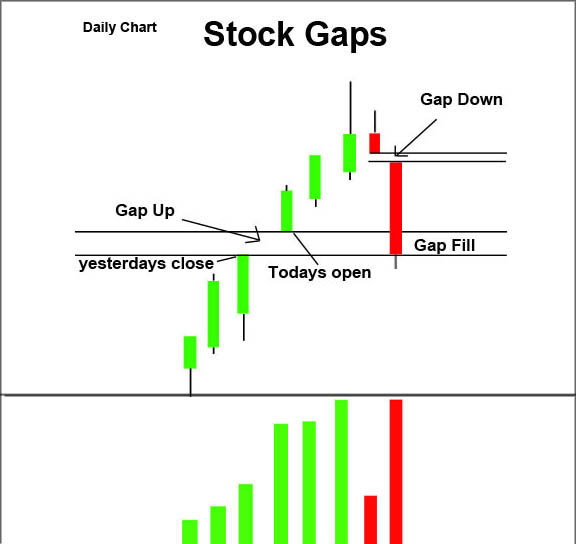

This signal reflects a significant shift from buying to selling activity that usually coincides with falling demand for a stock. An exhaustion gap is a technical signal marked by a break lower in prices (usually on a daily chart) that occurs after a rapid rise in a stock's price over several weeks prior.In other words, there was no trading, defined as an exchange of ownership in a security, between the price point where the runaway gap began and where it ended. A runaway gap, typically seen on charts, occurs when trading activity skips sequential price points, usually driven by intense investor interest.A breakaway gap could also occur out of another type of chart pattern, such as a triangle, wedge, cup and handle, rounded bottom or top, or head and shoulders pattern.
:max_bytes(150000):strip_icc()/dotdash_Final_Gap_Dec_2020-01-fe355dec403a4167b06f8c5a60e149e5.jpg)
When the price breaks out of a well-established trading range via a gap, that is a breakaway gap. A breakaway gap occurs when the price gaps above a support or resistance area, like those established during a trading range.Common gaps are also known as "area gaps" or "trading gaps" and tend to be accompanied by normal average trading volume. Common gaps generally get filled relatively quickly (usually within a couple of days) when compared to other types of gaps. If you Bet in the direction of the gap filling every day, you will be right nearly 100 of the time. Almost every stock opens at a different price than it closes. Day trading gaps is possible, profitable, and easy. In general, there is no major event that precedes this type of gap. Read it all the way through before you read the gap trading strategies below.The high_check numbers ( blue) are being identified, but are being ignored because they are within another upward_gap.ĭf = (df > df.shift(1)).shift(-1).The upward_gap number ( green) remains True until the Low value drops below the high_check number. A gap is simply an imbalance between buying and selling orders stacked up from when the stock market closed one day and opened the next.The high_check number ( yellow) is the High value that is being used to identify when the gap is filled.For example, imagine a stock was trading at 32 per share before an overnight gap. The check_gap value ( orange) is used to identify the row containing the high_check number. A gap becomes filled when its price returns to the original, pre-gap level.I have not done anything with additional hierarchies of gaps, however, have accommodated for the base gap (or what you are calling upward gap 1). Ok - while this is not exactly what you were hoping for, I think I have something that somewhat satisfies the requirements. Based on that analysis alone, buying ABC at 11. illustration of man filling hole with solid. What does that mean Well, if ABC company closed yesterday at 10.00 and opened today at 11.00, 'filling the gap' would occur when ABC fell back to 10.00. upward_gap upward_gap_noĮxpected Output (open to any better representation): High Low. Top view of an empty space of jigsaw puzzle fill with a phrase Fill The Gaps. Filling the gap is a popular strategy where you buy a stock when it gaps down in the morning and then wait for it to fill the gap.
#STOCK FILL THE GAP HOW TO#
Given that AAPL created an upward gap on and filled this gap on (and there will be multiple gaps), how to identify if the nearest upward gap is filled in a pythonic way?ĭf = ('AAPL', 'yahoo', start='', end='')ĭf = df > df.shift(1) # identify upward gapĭf = df.cumsum()Ĭurrent Output: High Low. I'm testing a strategy to trade on gap fill.


 0 kommentar(er)
0 kommentar(er)
